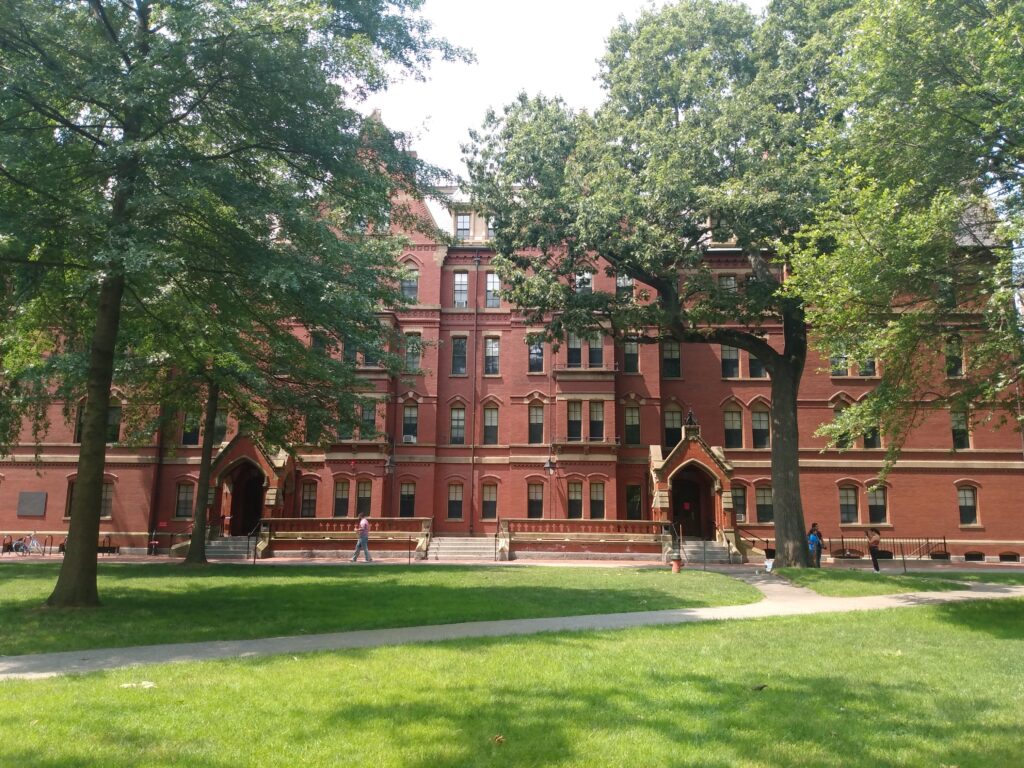
I woke on Sunday grateful for the previous day’s adventures and massive coincidence. As usual, I had slept late, so I headed to Cambridge, found parking near Harvard Yard–the oldest part of the campus of Harvard University, and I wandered around for a few hours, taking in the beautiful buildings and serenity of the place in the midst of summer break. Because of
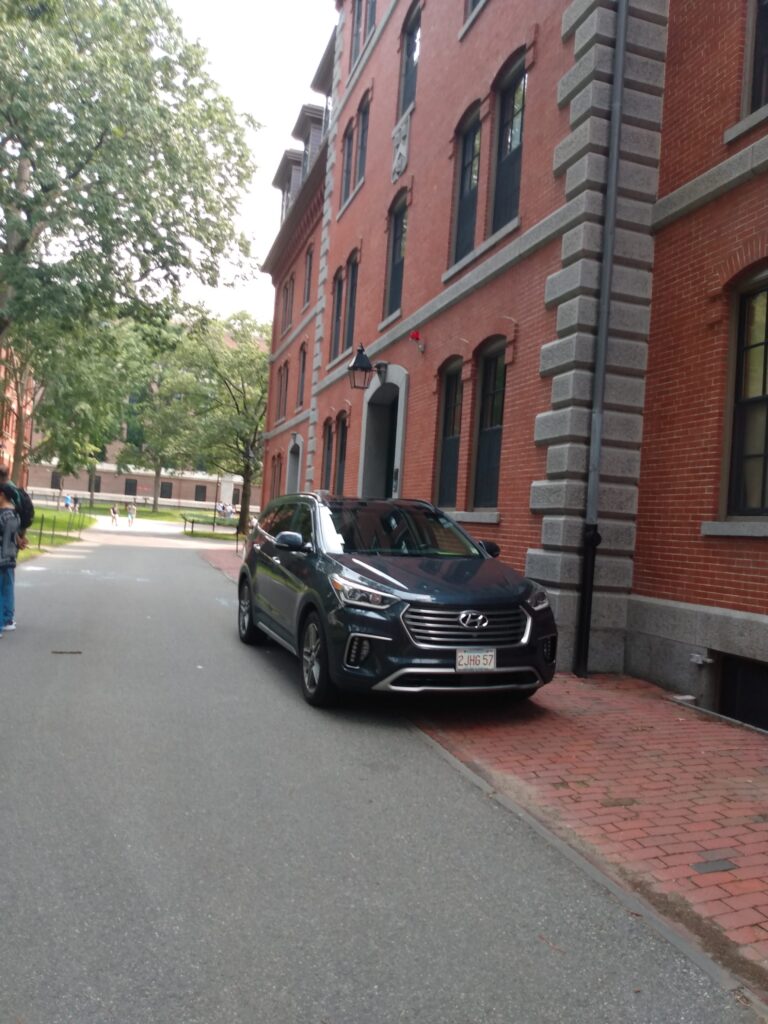
Covid, I did not wander inside any of the buildings, but admired the architecture. I found the surprisingly pretty church where I would have gone to Mass had I been up earlier, then found a cafe where I had lunch and did some reading to prepare for my fall class. It seemed appropriate and cathedrals of learning across the street focused my reading.
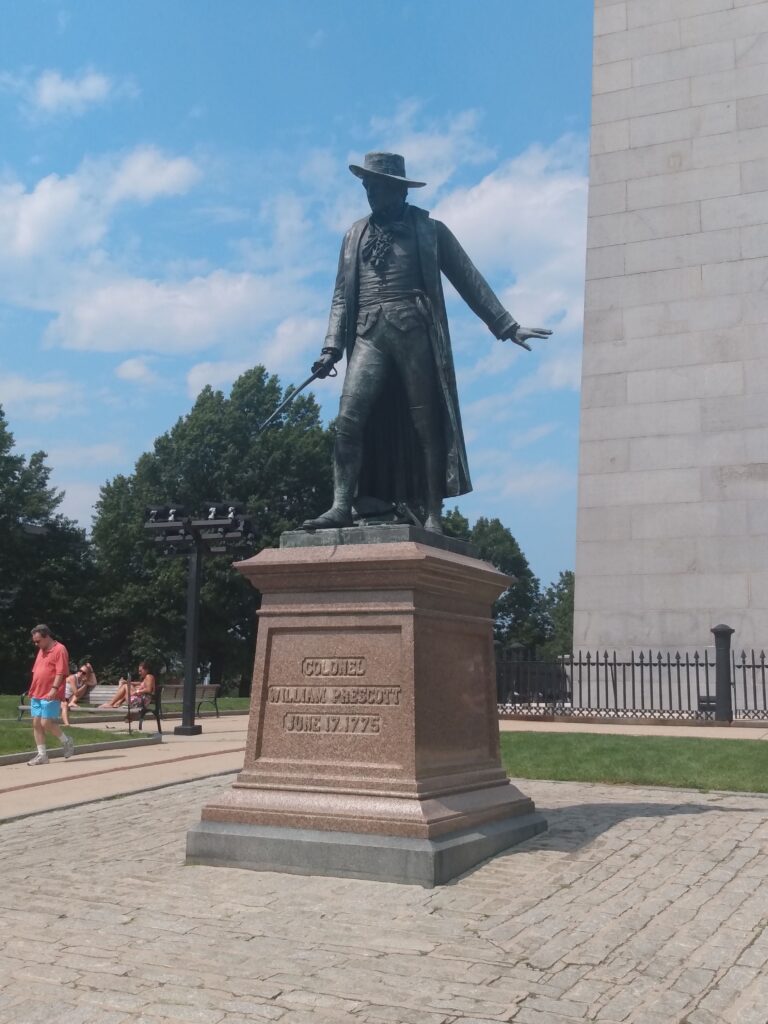
I wanted to resume the Freedom Trail where I had left off on Saturday, so I headed to Charlestown to park at the end of the Trail so that I could drive from there when I had completed it. Boston has incorporated Charlestown in recent centuries, but it sits on a peninsula on the northern end of the Charles River and was the original settlement. In the early 19th century, it drew Irish immigrants in an age where their ethnicity and religion raised considerable zenophobia and violence among Boston’s inhabitants. It is also the location of Bunker Hill, where New England soldiers met the British army in battle in June 1775. There is an elaborate monument and small museum, which explains Charlestown’s history, including the burning of the Ursuline Convent in 1834, and then, the resistance of the largely Irish community to forced busing in the late 20th century. I think I took in less about the battle, but learned something new about Boston and how it was shaped.
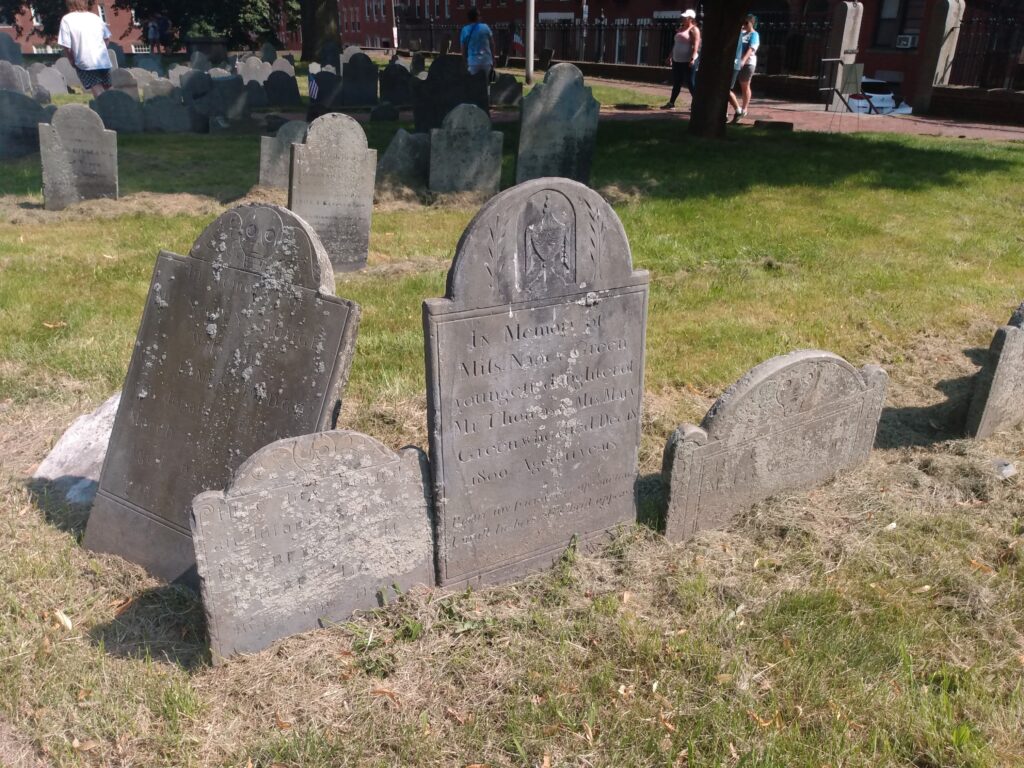
From there, I headed down to the North End and my first stop was Copp’s Hill Burying Ground, which dates from 1659. It contains the remains of Cotton and Increase Mather, as well as Robert Newman, the sexton at Old North Church who signaled to Paul Revere during his midnight ride. The overlook of the cemetery made it a valuable site for the British military to use their cannons against Charlestown during the Revolutionary battles. After poking around there, I took a picture of the tiny house across from the entrance, then headed toward the Old North Church. Because it was a summer Sunday, tourists were detoured off the trail to see it, and it was not open. But I paid my respect to Paul Revere’s statue, stopped near St. Stephen’s Church, where Rose Kennedy was baptised and buried when there was a considerable Irish presence.
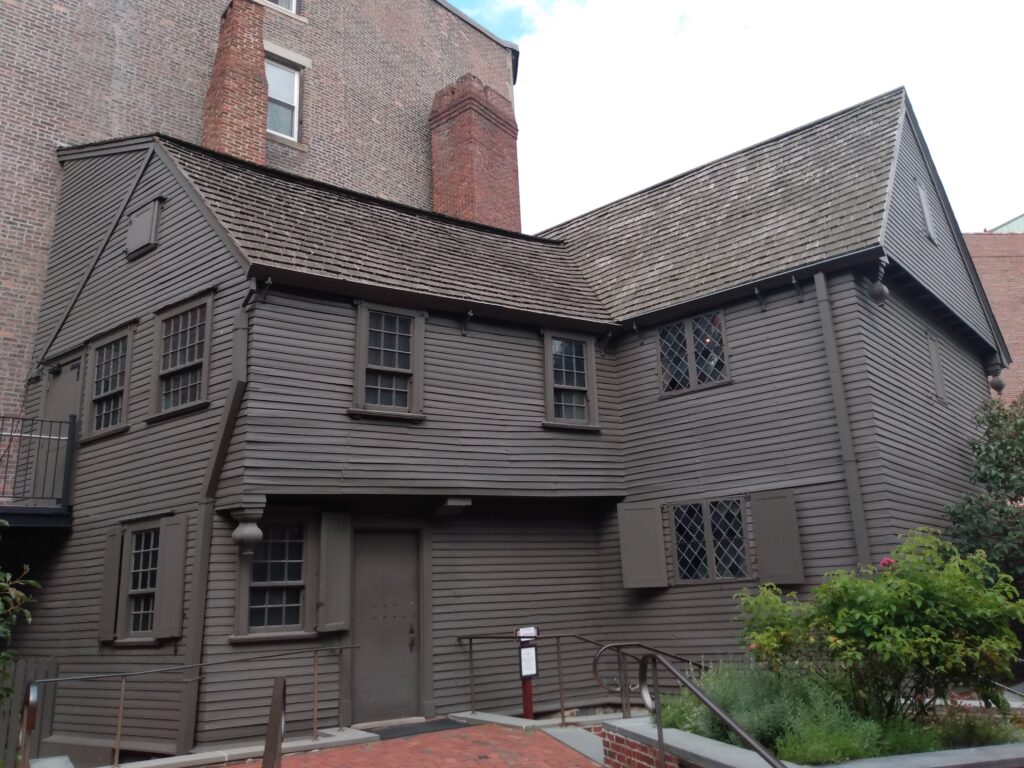
My next stop was at the Paul Revere House, which is privately owned. The museum discusses the Reveres and their tenure there, as well as a bit about the diverse Americans who lived in the house after him. I Hanover Street, the main street in the North End, was bustling with its normal foot traffic and busy restaurants. There was also an Italian-American parade moving through the streets, complete with statues and bands. It was crowded and hot. I learned that St. Leonard’s Churche on Hanover was the first Italian-American church, so I
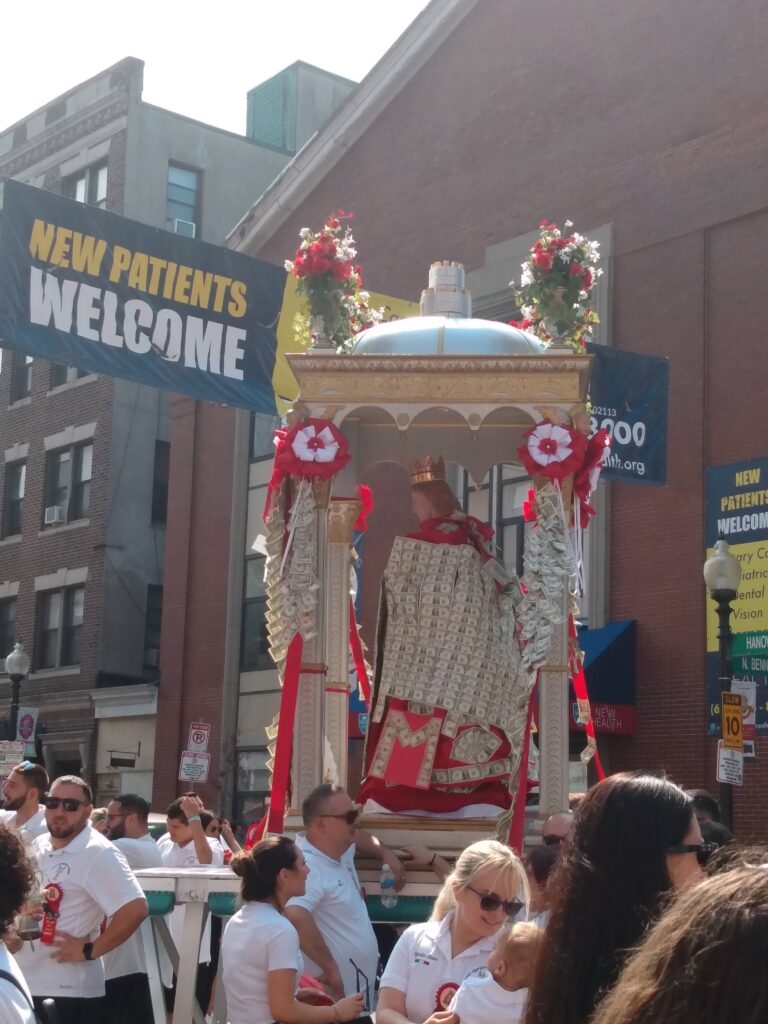
stopped to have Mass said for my friend and colleague Leonard Primiano, who had recently died. I was delighted that I found such an iconic place to be a patronal name.
I headed back toward Charlestown, crossing the bridge and taking in the smaller markers. Boston’s Big Dig, the 25 year effort to build transportation, had paid off for Charlestown. I landed back to Bunker Hill as things were closing and my feet were very tired, but I wanted to take in Salem before the end of the day.
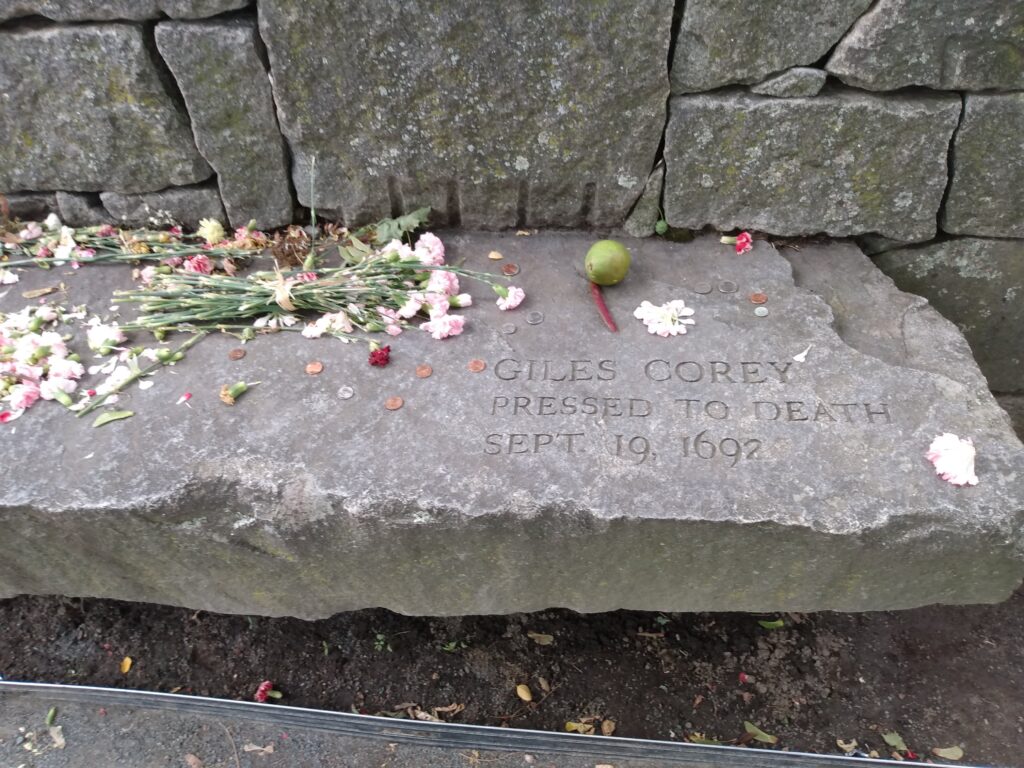
When I was a consultant, I was a regular in Salem. It’s an interesting place. Because of the witch trials (near present-day Danvers), many people come there expecting to find the supernatural elements, as if there was a witch colony there, rather than a bunch of Puritans who engaged in witch hunting of people with no relationship to wicca. My first stop was memorial for those who had been killed, which is respectful.
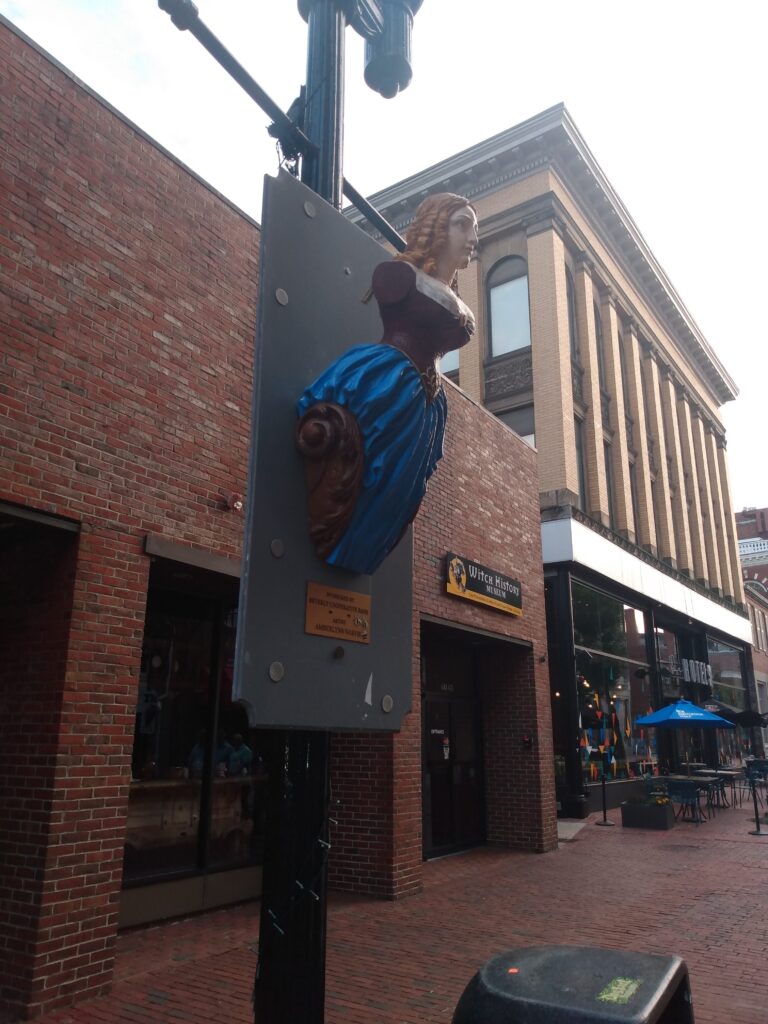
I got there just before it closed for the day, and the guide suggested I head to the Salem Maritime NPS site, which emphasizes the mariner history of the area, Salem’s main industry throughout its history. I walked around and then stopped at the House of the Seven Gables, made famous by Nathanial Hawthore, but it was closed for an event.
At this point, I had put in over 20K steps and was starving, so I stopped at a tavern and had a burger and cider before more wandering around the quieting town. It was good to visit again, and as the sun set, I headed off for the evening, engrossed in my Chappaquiddick podcast.
